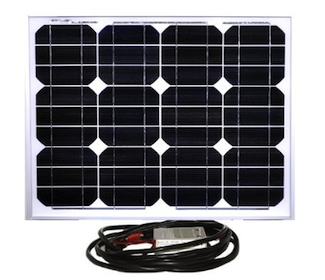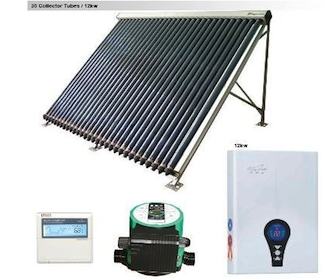Solar Energy Facts
Our nearest star, The Sun, bathes Earth with enormous amounts of energy, 24 hours a day, 7 days a week. Considered an 'alternative' energy because it doesn't come from traditional sources of energy like coal and oil, sunlight is actually Earth's original energy.
In fact, without the sun's energy, life on this planet would never have been possible. Plants use the sun's energy to grow, creating oxygen as a result and providing humans and other animals with food. You could say we humans have been using this 'alternative' solar energy since the dawn of history.
To think about it another way, the energy from the sun is really the ONLY form of energy we on Earth have. All fossil fuels are forms of stored solar energy. Coal, gas, and oil were all formed millions of years ago from plant matter. The energy created from the wind relies on the sun, for the sun drives our planet's weather, including the wind. Biomass fuels such as wood also rely on sunlight to grow. With the possible exception of nuclear power, we have always relied on the sun in one way or another.
As a replacement fuel for fossil fuels, solar energy has a much shorter history. While high initial purchase and installation costs can be a barrier for many who'd like to enter the solar energy market, solar energy is quickly becoming more efficient and cost competitive with traditional energy sources.
Homeowners can take advantage of the sun's energy in simple ways, such as drying clothes on a clothesline on a sunny day, to helping keep a home warm in the winter with a passive solar home design. Find out more be visiting our article Passive Solar Design.
Another excellent use of solar energy is as a water heater. Solar water heaters are typically more affordable than photovoltaic solar electricity, while creating hot water for the home (or assisting a traditional water heating system).
Finally, photovoltaic solar electricity for the home can provide most, if not all, of a home's electricity needs, replacing more polluting forms of energy such as coal. For more information go to our article - Residential Solar Power.
Here are some facts about solar energy from our sun which, when harnessed by today's high-tech solar energy technologies, can act as a gigantic battery in the sky for all the world to use as a clean, green source of power.
- In one hour more sunlight hits the earth than is used by the entire human population in an entire year.
- Solar energy is measured in kilowatt-hours. 1 kilowatt equals 100 watts of electricity. 1 kilowatt-hour (kWh) is the amount of electricity needed to light a 100 watt light bulb for 10 hours. The U.S. Department of Energy estimates that the average American home used approximately 866 kilowatt-hours per month in 1999.
- A residential solar energy system capable of producing 1 kilowatt of power consists of approximately 10 to 12 solar panels requiring about 100 square feet of area.
- A 1 kilowatt home solar energy system will create about 1,600 kilowatt hours per year when it gets 5.5 hours of sunshine a day. This is the same amount of electricity produced by burning 160 pounds of coal, which creates 300 pounds of carbon dioxide gas.
Even with the relatively low efficiency of today's solar panels (around 15%), so much solar energy hits the earth each day that it only makes sense to invest in solar technology on both a residential and industrial scale. Research and development is leading to a gradual decline in the cost of solar energy technology of around 3 to 5 % a year.
The proper orientation of solar panels in a residential setting is under a bit of debate. Most solar panels face south to collect the most amount of energy, but some experts are suggesting that facing solar panels to the west, where they capture more of the late afternoon/early evening sunshine makes more sense, as this is the time of day when electricity usage skyrockets as people return home and crank the A/C and power up appliances, lights, and devices. Read more about this debate HERE.
Google has created a new internet-based resource called Project Sunroof that makes it incredibly easy for homeowners to research whether solar power is a good choice for their home, as well as how many solar panels would be needed and how much money could be ssaved annually by switching to solar. Click HERE for more info!
With continually improving efficiencies and technologies, the ongoing decrease in costs, and the constant increase in the cost of traditional energy sources like coal and oil, there's never been a better time to invest in solar energy! Further incentives such as tax credits offered by the federal government are also helping put solar power within the reach of homeowners everywhere.
comments powered by Disqus



























































































































































































